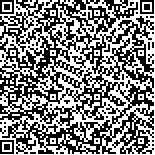| 引用本文: | 盛云华,冯红敏,胡玥,王宇,郑赛晶,夭建华,唐黎明.1,2-丙二醇体内外安全性实验研究[J].中国现代应用药学,2019,36(19):2391-2396. |
| SHENG Yunhua,FENG Hongmin,HU Yue,WANG Yu,ZHENG Saijing,YAO Jianhua,TANG Liming.Study on in Vivo and in Vitro Safety of 1,2-Propylene Glycol[J].Chin J Mod Appl Pharm(中国现代应用药学),2019,36(19):2391-2396. |
|
| |
|
|
| 本文已被:浏览 2548次 下载 1439次 |

码上扫一扫! |
|
|
| 1,2-丙二醇体内外安全性实验研究 |
|
盛云华1, 冯红敏1, 胡玥1, 王宇1, 郑赛晶2, 夭建华3, 唐黎明1
|
|
1.上海市食品药品检验所药理毒理室, 上海 201203;2.上海新型烟草制品研究院, 上海 200082;3.云南中烟工业有限责任公司, 昆明 650000
|
|
| 摘要: |
| 目的 从体内和体外分别考察1,2-丙二醇气管内雾化给药局部刺激性、体外溶血性和细胞毒性,初步评价1,2-丙二醇吸入给药安全性。方法 取大鼠,采用气管内雾化给药方式给予30% 1,2-丙二醇200 μL,连续5 d,评价1,2-丙二醇吸入给药对肺部的局部刺激性;采用体外试管法肉眼观察和紫外分光光度计法计算溶血率考察1,2-丙二醇的溶血性;采用MTT法研究1,2-丙二醇对人肺腺癌细胞A549、人支气管上皮细胞16HBE、大鼠气管上皮细胞RTE的不良反应,分别计算IC50值。结果 1,2-丙二醇气管内雾化给药后,动物出现极轻度的血管壁周围水肿,极轻度到轻度的肺脏局部支气管内炎症细胞浸润,溶剂对照出现极轻度到轻度的血管壁周围水肿。当1,2-丙二醇浓度≥50%,溶血试验肉眼观察发现,温育1 h上层略偏红色,温育时间延长,颜色略加深,3 h温育结束,发生溶血,但未见凝聚现象;采用紫外分光光度计法计算溶血率均>5%,均有溶血发生。细胞毒性试验中,1,2-丙二醇体积分数在0.12%~10%,对A549、16HBE及RTE的细胞不良反应存在一定的量效关系,相关系数R2值分别为0.986,0.989,0.993,IC50分别为2.538%,2.015%,1.983%。结论 气管内雾化给予1,2-丙二醇对肺部刺激性较小,肺部耐受性较好。浓度≥50%时,可引起溶血。体积分数达到2%时,1,2-丙二醇对A549、16HBE和RTE细胞有显著的不良反应。本研究为1,2-丙二醇吸入途径应用的安全性提供了毒理学数据参考。 |
| 关键词: 1,2-丙二醇 气管内雾化 局部刺激 溶血 细胞毒性 吸入 |
| DOI:10.13748/j.cnki.issn1007-7693.2019.19.005 |
| 分类号:R965.3 |
| 基金项目:中国烟草总公司科技重大专项[110201501002(XX-02)];云南省烟草化学重点实验室2017年度开放基金项目(2017539200340398) |
|
| Study on in Vivo and in Vitro Safety of 1,2-Propylene Glycol |
|
SHENG Yunhua1, FENG Hongmin1, HU Yue1, WANG Yu1, ZHENG Saijing2, YAO Jianhua3, TANG Liming1
|
|
1.Division of Pharmacology and Toxicology, Shanghai Institute for Food and Drug Control, Shanghai 201203, China;2.Shanghai New Tobacco Product Research Institute, Shanghai 200082, China;3.China Tobacco Yunnan Industrial Co., Ltd., Kunming 650000, China
|
| Abstract: |
| OBJECTIVE To study the local irritative response by intratracheal instillation, hemolysis and cytotoxicity of 1,2-propylene glycol(PG) in vivo and in vitro, and evaluate the inhalation safety of PG. METHODS Rats were administrated with 30% PG 200 µL by intratracheal instillation once a day, followed by 5 d to evaluate the local irritation. The hemolysis rate of 1,2-propanediol was investigated by in vitro test tube visual observation and ultraviolet spectrophotometer. The toxic effects of PG on human lung adenocarcinoma A549, human bronchial epithelial cells 16HBE and rat tracheal epithelial cells RTE were studied by MTT assay, calculated IC50 value separatel. RESULTS After intratracheal administration of PG, rats showed extremely mild perivascular edema and extremely mild to mild infiltration of inflammatory cells in bronchi. The control group showed extremely mild to mild perivascular edema. The upper layer of PG solution with concentration ≥ 50% turned out to be red slightly after incubating 1 h, the color deepens as the incubation time increases. After 3 h incubation, hemolysis occurred, but no aggregation occurred. The hemolysis rate was calculated by the ultraviolet spectrophotometer method to be >5%, and hemolysis occurred. There was a dose-effect relationship between the cytotoxicity on A549, 16HBE and RTE cells with varying volume fraction of PG concentration in the range of 0.12%-10%, R2 values were 0.986, 0.989, 0.993, and IC50 were 2.538%, 2.015%, 1.983%, respectively. CONCLUSION PG is less likely to irritate in lung by intratracheal instillation with good pulmonary tolerance. Hemolytic reaction will be caused by PG with the concentration ≥ 50%. PG has obvious toxic effect on A549, 16HBE and RTE cells when the volume fraction reached 2%. All the above studies provide a supportive data for PG inhalation toxicity. |
| Key words: 1,2-propylene glycol intratracheal instillation local irritation hemolysis cytotoxicity inhalation |
|
|
|
|
